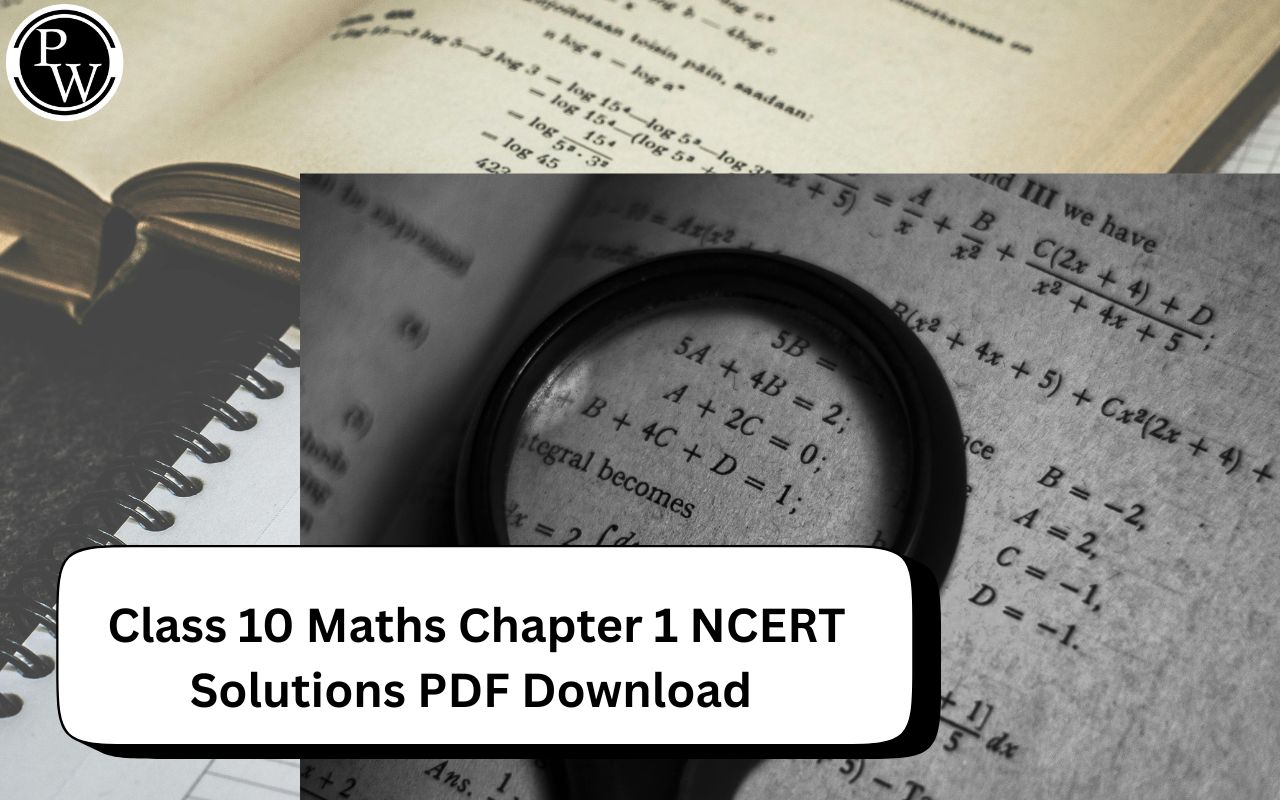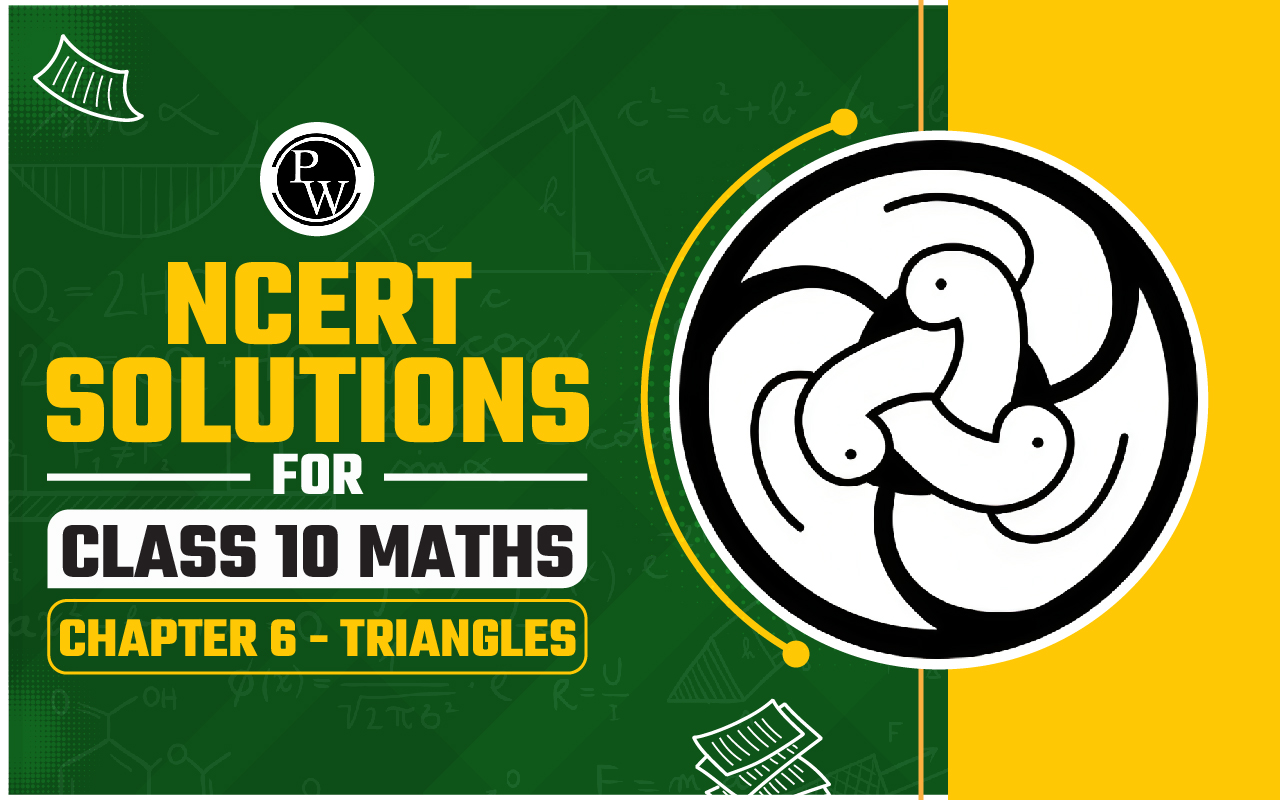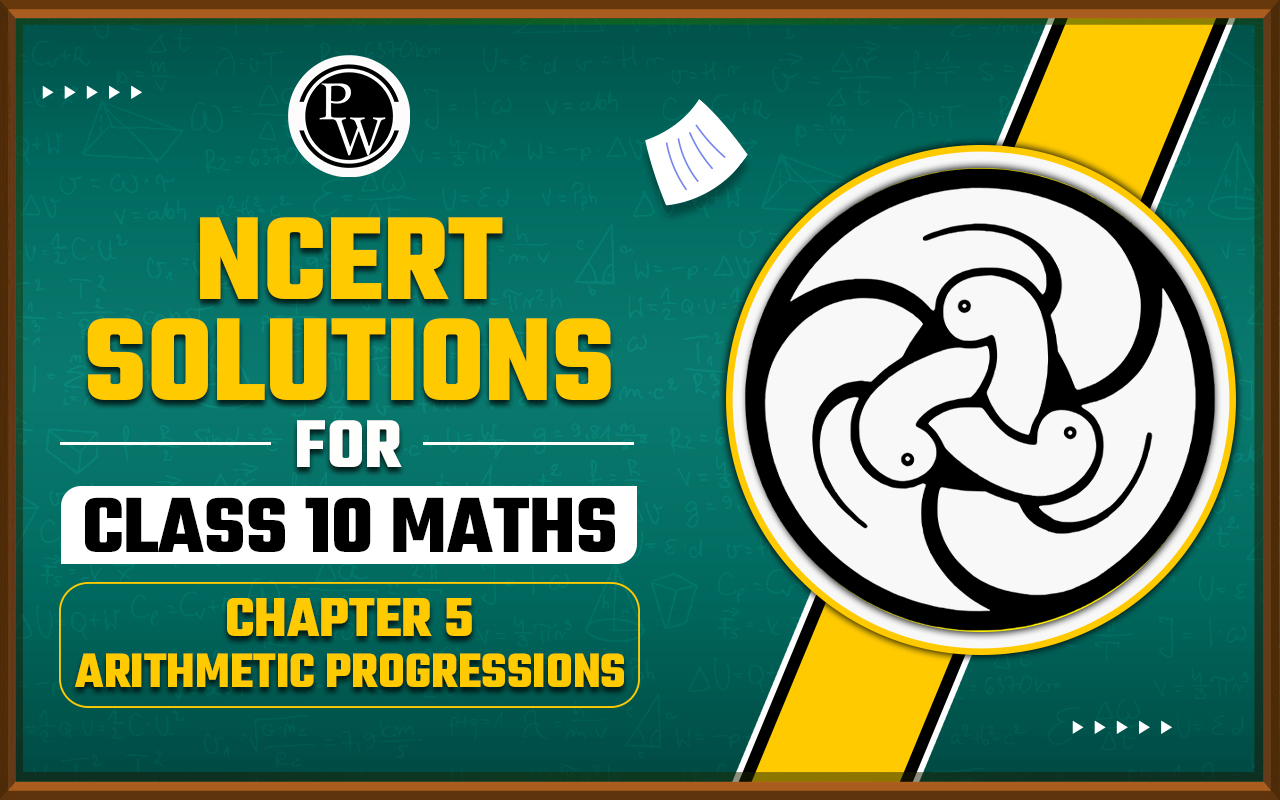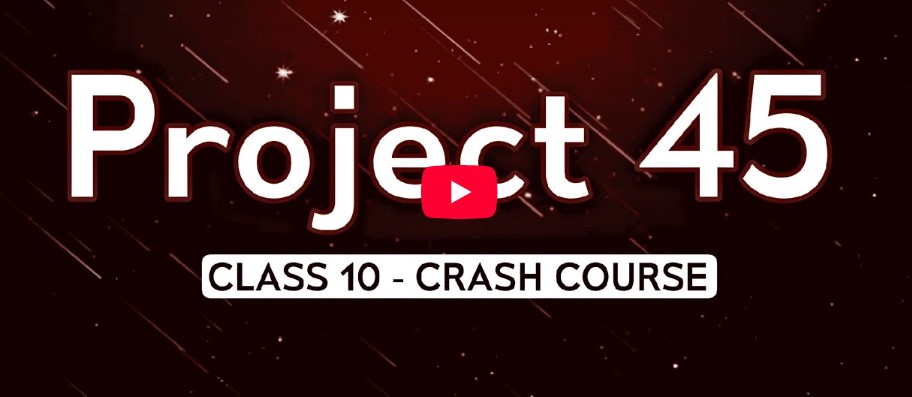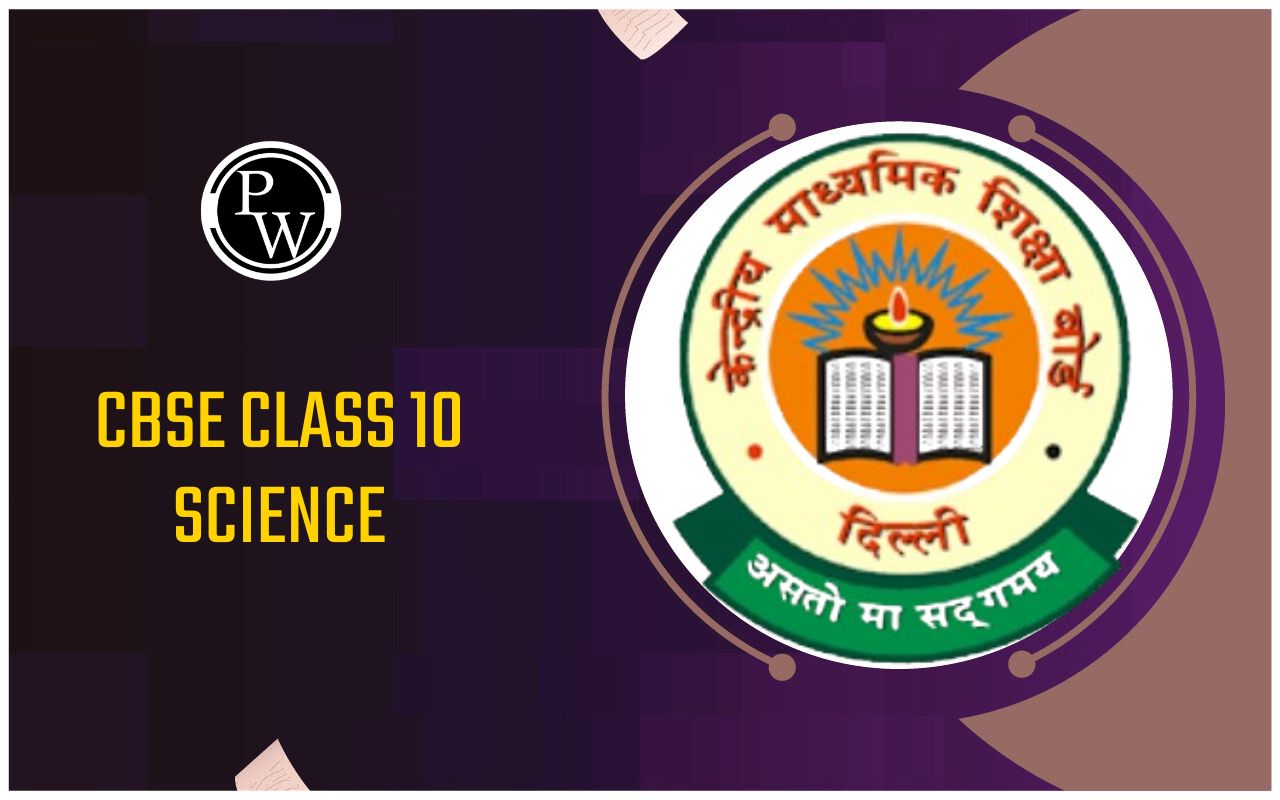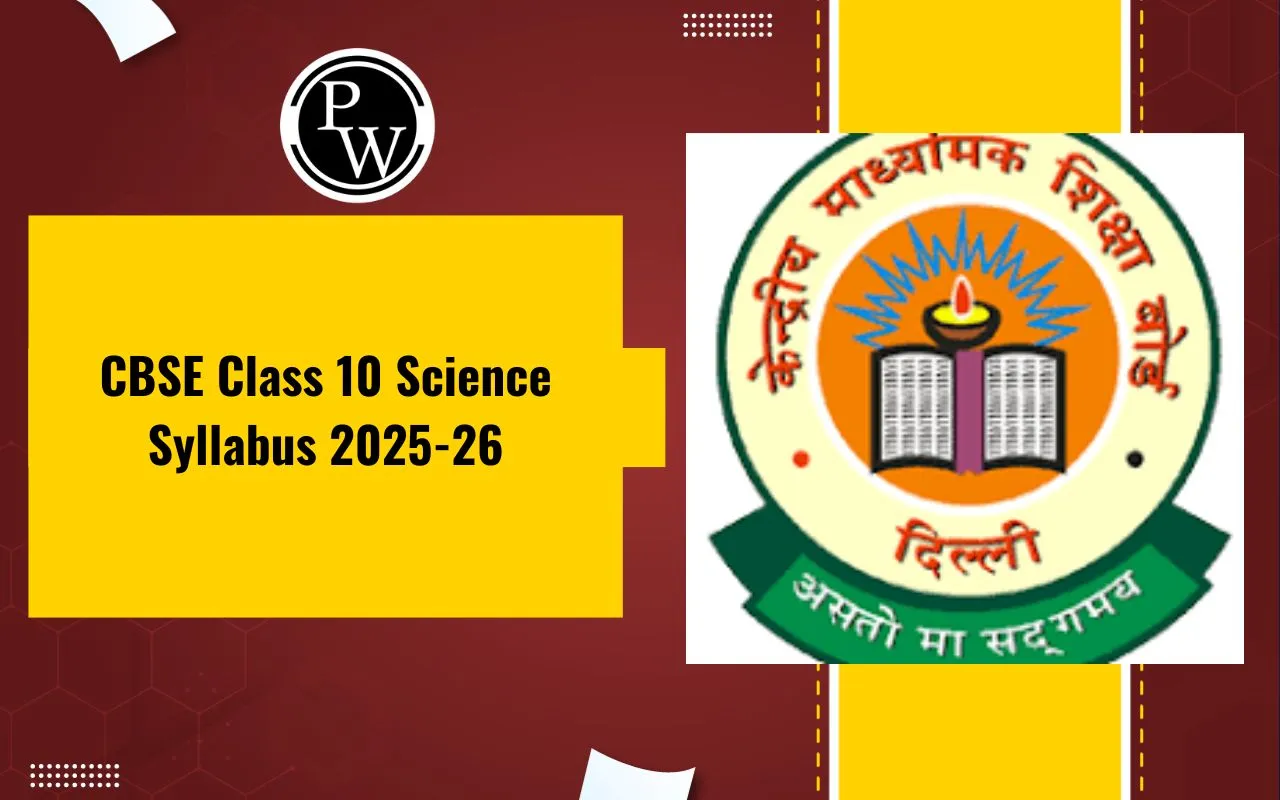
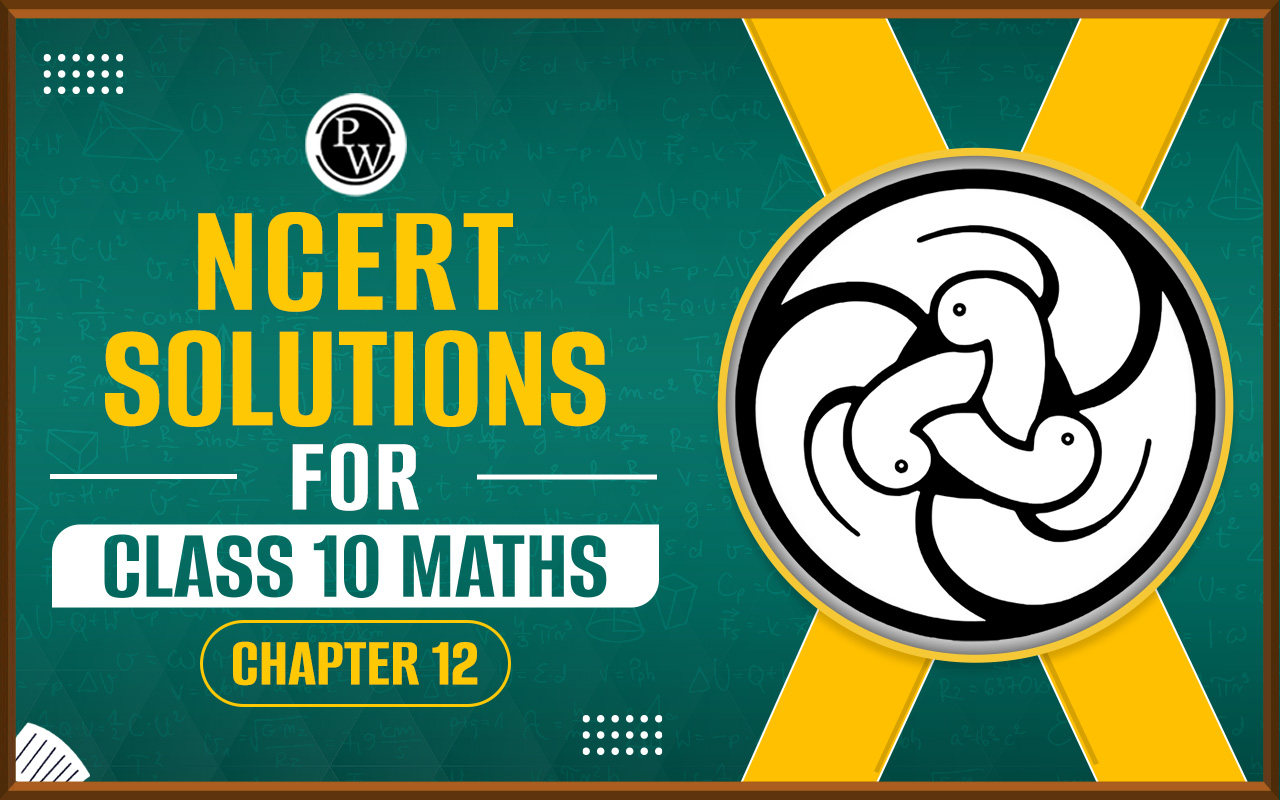
NCERT Solutions for Class 10 Maths Chapter 12
NCERT Solutions for Class 10 Maths Chapter 12: Students in Class 10 require NCERT Solutions for Class 10 Maths Chapter 12 Areas Related to Circles as essential study materials. Students can better grasp the kinds of problems that will be asked in the CBSE Class 10 Maths board exams by using these NCERT Solutions for Class 10 Maths Chapter 12.
Furthermore, offering answers for every circle-related problem aids students in efficiently studying for the CBSE exams.NCERT Solutions for Class 10 Maths Chapter 12 PDF
With plenty of time to prepare, students may ace their board examinations with the help of the NCERT Solutions for Class 10 Maths Chapter 12, which are accessible here. Get the Class 10 Maths NCERT Solutions for free to answer all of your conceptual questions. Based on the most recent revision to the CBSE syllabus for 2023–24, the experts have created these NCERT Solutions for Class 10 Maths Chapter 12 get more ready for their board exams.NCERT Solutions for Class 10 Maths Chapter 12 PDF
NCERT Solutions for Class 10 Maths Chapter 12 Areas Related to Circles
1. The radii of the two circles are 19 cm and 9 cm, respectively. Find the radius of the circle which has a circumference equal to the sum of the circumferences of the two circles.
Solution:
The radius of the 1 st circle = 19 cm (given) ∴ circumference of the 1 st circle = 2π×19 = 38π cm The radius of the 2 nd circle = 9 cm (given) ∴ circumference of the 2 nd circle = 2π×9 = 18π cm So, The sum of the circumference of two circles = 38π+18π = 56π cm Now, let the radius of the 3 rd circle = R ∴ the circumference of the 3 rd circle = 2πR It is given that sum of the circumference of two circles = circumference of the 3 rd circle Hence, 56π = 2πR Or, R = 28 cm.2. The radii of the two circles are 8 cm and 6 cm, respectively. Find the radius of the circle having an area equal to the sum of the areas of the two circles.
Solution:
The radius of 1 st circle = 8 cm (given) ∴ area of 1 st circle = π(8) 2 = 64π The radius of 2 nd circle = 6 cm (given) ∴ area of 2 nd circle = π(6) 2 = 36π So, The sum of 1 st and 2 nd circle will be = 64π+36π = 100π Now, assume that the radius of 3 rd circle = R ∴ area of the circle 3 rd circle = πR 2 It is given that the area of the circle 3 rd circle = Area of 1 st circle + Area of 2 nd circle Or, πR 2 = 100πcm 2 R 2 = 100cm 2 So, R = 10cm3. Fig. 12.3 depicts an archery target marked with its five scoring regions from the centre outwards as Gold, Red, Blue, Black and White. The diameter of the region representing the Gold score is 21 cm, and each of the other bands is 10.5 cm wide. Find the area of each of the five scoring regions.

Solution:
The radius of 1 st circle, r 1 = 21/2 cm (as diameter D is given as 21 cm) So, area of gold region = π r 1 2 = π(10.5) 2 = 346.5 cm 2 Now, it is given that each of the other bands is 10.5 cm wide, So, the radius of 2 nd circle, r 2 = 10.5cm+10.5cm = 21 cm Thus, ∴ area of red region = Area of 2 nd circle − Area of gold region = (πr 2 2 −346.5) cm 2 = (π(21) 2 − 346.5) cm 2 = 1386 − 346.5 = 1039.5 cm 2 Similarly, The radius of 3 rd circle, r 3 = 21 cm+10.5 cm = 31.5 cm The radius of 4 th circle, r 4 = 31.5 cm+10.5 cm = 42 cm The Radius of 5 th circle, r 5 = 42 cm+10.5 cm = 52.5 cm For the area of n th region, A = Area of circle n – Area of the circle (n-1) ∴ area of the blue region (n=3) = Area of the third circle – Area of the second circle = π(31.5) 2 – 1386 cm 2 = 3118.5 – 1386 cm 2 = 1732.5 cm 2 ∴ area of the black region (n=4) = Area of the fourth circle – Area of the third circle = π(42) 2 – 1386 cm 2 = 5544 – 3118.5 cm 2 = 2425.5 cm 2 ∴ area of the white region (n=5) = Area of the fifth circle – Area of the fourth circle = π(52.5) 2 – 5544 cm 2 = 8662.5 – 5544 cm 2 = 3118.5 cm 24. The wheels of a car are of diameter 80 cm each. How many complete revolutions does each wheel make in 10 minutes when the car is travelling at a speed of 66 km per hour?
Solution:
The radius of car’s wheel = 80/2 = 40 cm (as D = 80 cm) So, the circumference of wheels = 2πr = 80 π cm Now, in one revolution, the distance covered = circumference of the wheel = 80 π cm It is given that the distance covered by the car in 1 hr = 66km Converting km into cm, we get, Distance covered by the car in 1hr = (66×10 5 ) cm In 10 minutes, the distance covered will be = (66×10 5 ×10)/60 = 1100000 cm/s ∴ distance covered by car = 11×10 5 cm Now, the no. of revolutions of the wheels = (Distance covered by the car/Circumference of the wheels) =( 11×10 5 )/80 π = 4375.Related Links -
5. Tick the correct solution in the following and justify your choice. If the perimeter and the area of a circle are numerically equal, then the radius of the circle is
(A) 2 units
(B) π units
(C) 4 units
(D) 7 units
Solution:
Since the perimeter of the circle = area of the circle, 2πr = πr 2 Or, r = 2 So, option (A) is correct, i.e., the radius of the circle is 2 units.Exercise: 12.2 (Page No: 230)
1. Find the area of a sector of a circle with a radius 6 cm if the angle of the sector is 60°.
Solution:
It is assumed that the sector's angle is 60°. We know that the area of sector = (θ/360°)×πr 2 ∴ area of the sector with angle 60° = (60°/360°)×πr 2 cm 2 = (36/6)π cm 2 = 6×22/7 cm 2 = 132/7 cm 22. Find the area of a quadrant of a circle whose circumference is 22 cm.
Solution:
Circumference of the circle, C = 22 cm (given) It should be remembered that a sector that forms a 90° angle is considered to be in a circle's quadrant. Let the radius of the circle = r As C = 2πr = 22, R = 22/2π cm = 7/2 cm ∴ area of the quadrant = (θ/360°) × πr 2 Here, θ = 90° So, A = (90°/360°) × π r 2 cm 2 = (49/16) π cm 2 = 77/8 cm 2 = 9.6 cm 23. The length of the minute hand of a clock is 14 cm. Find the area swept by the minute hand in 5 minutes.
Solution:
Length of minute hand = radius of the clock (circle) ∴ Radius (r) of the circle = 14 cm (given) Angle swept by minute hand in 60 minutes = 360° So, the angle swept by the minute hand in 5 minutes = 360° × 5/60 = 30° We know, Area of a sector = (θ/360°) × πr 2 Now, the area of the sector making an angle of 30° = (30°/360°) × πr 2 cm 2 = (1/12) × π14 2 = (49/3)× (22/7) cm 2 = 154/3 cm 24. A chord of a circle of radius 10 cm subtends a right angle at the centre. Find the area of the corresponding:
(i) minor segment
(ii) major sector. (Use π = 3.14)
Solution:
 The chord in this case, denoted by AB, subtains a 90° angle at point O.
It is given that the radius (r) of the circle = 10 cm
The chord in this case, denoted by AB, subtains a 90° angle at point O.
It is given that the radius (r) of the circle = 10 cm
(i) Area of minor sector = (90/360°)×πr 2
= (¼)×(22/7)×10 2 Or, the Area of the minor sector = 78.5 cm 2 Also, the area of ΔAOB = ½×OB×OA Here, OB and OA are the radii of the circle, i.e., = 10 cm So, the area of ΔAOB = ½×10×10 = 50 cm 2 Now, area of minor segment = area of the minor sector – the area of ΔAOB = 78.5 – 50 = 28.5 cm 2(ii) Area of major sector = Area of the circle – Area of he minor sector
= (3.14×10 2 )-78.5 = 235.5 cm 25. In a circle of radius 21 cm, an arc subtends an angle of 60° at the centre. Find:
(i) the length of the arc
(ii) area of the sector formed by the arc
(iii) area of the segment formed by the corresponding chord
Solution:
 Given,
Radius = 21 cm
θ = 60°
Given,
Radius = 21 cm
θ = 60°
(i) Length of an arc = θ/360°×Circumference(2πr)
∴ Length of an arc AB = (60°/360°)×2×(22/7)×21 = (1/6)×2×(22/7)×21 Or Arc AB Length = 22cm(ii) It is given that the angle subtended by the arc = 60°
So, the area of the sector making an angle of 60° = (60°/360°)×π r 2 cm 2 = 441/6×22/7 cm 2 Alternatively, the sector that the arc APB forms has a 231 cm2 area.(iii) Area of segment APB = Area of sector OAPB – Area of ΔOAB
ΔOAB is an equilateral triangle because one angle is 60° and the other two arms of the triangle are the radii of the circle, which make them equal. Its area, then, will be approximately √3/4×a2 square units. The area of segment APB = 231-(√3/4)×(OA) 2 = 231-(√3/4)×21 2 Or, the area of segment APB = [231-(441×√3)/4] cm 26. A chord of a circle of radius 15 cm subtends an angle of 60° at the centre. Find the areas of the corresponding minor and major segments of the circle. (Use π = 3.14 and √3 = 1.73)
Solution:
 Given,
Radius = 15 cm
θ = 60°
So,
Area of sector OAPB = (60°/360°)×πr
2
cm
2
= 225/6 πcm
2
Now, ΔAOB is equilateral as two sides are the radii of the circle and hence equal and one angle is 60°.
So, Area of ΔAOB = (√3/4) ×a
2
Or, (√3/4) ×15
2
∴ Area of ΔAOB = 97.31 cm
2
Now, the area of minor segment APB = Area of OAPB – Area of ΔAOB
Or, the area of minor segment APB = ((225/6)π – 97.31) cm
2
= 20.43 cm
2
And,
Area of major segment = Area of the circle – Area of the segment APB
Or, area of major segment = (π×15
2
) – 20.4 = 686.06 cm
2
Given,
Radius = 15 cm
θ = 60°
So,
Area of sector OAPB = (60°/360°)×πr
2
cm
2
= 225/6 πcm
2
Now, ΔAOB is equilateral as two sides are the radii of the circle and hence equal and one angle is 60°.
So, Area of ΔAOB = (√3/4) ×a
2
Or, (√3/4) ×15
2
∴ Area of ΔAOB = 97.31 cm
2
Now, the area of minor segment APB = Area of OAPB – Area of ΔAOB
Or, the area of minor segment APB = ((225/6)π – 97.31) cm
2
= 20.43 cm
2
And,
Area of major segment = Area of the circle – Area of the segment APB
Or, area of major segment = (π×15
2
) – 20.4 = 686.06 cm
2
7. A chord of a circle of radius 12 cm subtends an angle of 120° at the centre. Find the area of the corresponding segment of the circle. (Use π = 3.14 and √3 = 1.73)
Solution:
Radius, r = 12 cm Now, draw a perpendicular OD on chord AB, and it will bisect chord AB. So, AD = DB Now, the area of the minor sector = (θ/360°)×πr
2
= (120/360)×(22/7)×12
2
= 150.72 cm
2
Consider the ΔAOB,
∠ OAB = 180°-(90°+60°) = 30°
Now, cos 30° = AD/OA
√3/2 = AD/12
Or, AD = 6√3 cm
We know OD bisects AB. So,
AB = 2×AD = 12√3 cm
Now, sin 30° = OD/OA
Or, ½ = OD/12
∴ OD = 6 cm
So, the area of ΔAOB = ½ × base × height
Here, base = AB = 12√3 and
Height = OD = 6
So, area of ΔAOB = ½×12√3×6 = 36√3 cm = 62.28 cm
2
∴ area of the corresponding Minor segment = Area of the Minor sector – Area of ΔAOB
= 150.72 cm
2
– 62.28 cm
2
= 88.44 cm
2
Now, the area of the minor sector = (θ/360°)×πr
2
= (120/360)×(22/7)×12
2
= 150.72 cm
2
Consider the ΔAOB,
∠ OAB = 180°-(90°+60°) = 30°
Now, cos 30° = AD/OA
√3/2 = AD/12
Or, AD = 6√3 cm
We know OD bisects AB. So,
AB = 2×AD = 12√3 cm
Now, sin 30° = OD/OA
Or, ½ = OD/12
∴ OD = 6 cm
So, the area of ΔAOB = ½ × base × height
Here, base = AB = 12√3 and
Height = OD = 6
So, area of ΔAOB = ½×12√3×6 = 36√3 cm = 62.28 cm
2
∴ area of the corresponding Minor segment = Area of the Minor sector – Area of ΔAOB
= 150.72 cm
2
– 62.28 cm
2
= 88.44 cm
2
8. A horse is tied to a peg at one corner of a square-shaped grass field of side 15 m by means of a 5 m long rope (see Fig. 12.11). Find
(i) the area of that part of the field in which the horse can graze.
(ii) the increase in the grazing area if the rope were 10 m long instead of 5 m. (Use π = 3.14)

Solution:
As the horse is tied at one end of a square field, it will graze only a quarter (i.e. sector with θ = 90°) of the field with a radius 5 m. Here, the length of the rope will be the radius of the circle, i.e. r = 5 m It is also known that the side of the square field = 15 m(i) Area of circle = πr 2 = 22/7 × 5 2 = 78.5 m 2
Now, the area of the part of the field where the horse can graze = ¼ (the area of the circle) = 78.5/4 = 19.625 m 2(ii) If the rope is increased to 10 m,
Area of circle will be = πr 2 =22/7×10 2 = 314 m 2 Now, the area of the part of the field where the horse can graze = ¼ (the area of the circle) = 314/4 = 78.5 m 2 ∴ increase in the grazing area = 78.5 m 2 – 19.625 m 2 = 58.875 m 29. A brooch is made with silver wire in the form of a circle with a diameter 35 mm. The wire is also used in making 5 diameters which divide the circle into 10 equal sectors, as shown in Fig. 12.12. Find:
(i) the total length of the silver wire required.
(ii) the area of each sector of the brooch.

Solution:
Diameter (D) = 35 mm Total number of diameters to be considered= 5 Now, the total length of 5 diameters that would be required = 35×5 = 175 Circumference of the circle = 2πr Or, C = πD = 22/7×35 = 110 Area of the circle = πr 2 Or, A = (22/7)× (35/2) 2 = 1925/2 mm 2(i) Total length of silver wire required = Circumference of the circle + Length of 5 diameter
= 110+175 = 285 mm(ii) Total Number of sectors in the brooch = 10
So, the area of each sector = total area of the circle/number of sectors ∴ Area of each sector = (1925/2)× 1/10 = 385/4 mm 210. An umbrella has 8 ribs which are equally spaced (see Fig. 12.13). Assuming the umbrella to be a flat circle of radius 45 cm, find the area between the two consecutive ribs of the umbrella.

Solution:
The radius (r) of the umbrella when flat = 45 cm So, the area of the circle (A) = πr 2 = (22/7)×(45) 2 =6364.29 cm 2 Total number of ribs (n) = 8 ∴ The area between the two consecutive ribs of the umbrella = A/n 6364.29/8 cm 2 Or, The area between the two consecutive ribs of the umbrella = 795.5 cm 211. A car has two wipers which do not overlap. Each wiper has a blade of length 25 cm sweeping through an angle of 115°. Find the total area cleaned at each sweep of the blades.
Solution:
Given, Radius (r) = 25 cm Sector angle (θ) = 115° Since there are 2 blades, The total area of the sector made by wiper = 2×(θ/360°)×π r 2 = 2×(115/360)×(22/7)×25 2 = 2×158125/252 cm 2 = 158125/126 = 1254.96 cm 212. To warn ships of underwater rocks, a lighthouse spreads a red-coloured light over a sector of angle 80° to a distance of 16.5 km. Find the area of the sea over which the ships are warned.
(Use π = 3.14)
Solution:
Let O bet the position of the lighthouse. The radius in this case will be the length of time that light travels.
Given radius (r) = 16.5 km
Sector angle (θ) = 80°
Now, the total area of the sea over which the ships are warned = Area made by the sector
Or, Area of sector = (θ/360°)×πr
2
= (80°/360°)×πr
2
km
2
= 189.97 km
2
The radius in this case will be the length of time that light travels.
Given radius (r) = 16.5 km
Sector angle (θ) = 80°
Now, the total area of the sea over which the ships are warned = Area made by the sector
Or, Area of sector = (θ/360°)×πr
2
= (80°/360°)×πr
2
km
2
= 189.97 km
2
13. A round table cover has six equal designs, as shown in Fig. 12.14. If the radius of the cover is 28 cm, find the cost of making the designs at the rate of ₹ 0.35 per cm 2 . (Use √3 = 1.7)

Solution:

14. Tick the correct solution in the following:
The area of a sector of angle p (in degrees) of a circle with radius R is
(A) p/180 × 2πR
(B) p/180 × π R 2
(C) p/360 × 2πR
(D) p/720 × 2πR 2
Solution:
The area of a sector = (θ/360°)×πr 2 Given, θ = p So, the area of sector = p/360×πR 2 Multiplying and dividing by 2 simultaneously, = (p/360)×2/2×πR 2 = (2p/720)×2πR 2 So, option (D) is correct.NCERT Solutions for Class 10 Maths Chapter 12 FAQs
How many exercises are there in Ch 12 Maths class 10?
What is area related to circle class 10?
What is the easiest chapter in class 10 maths?

